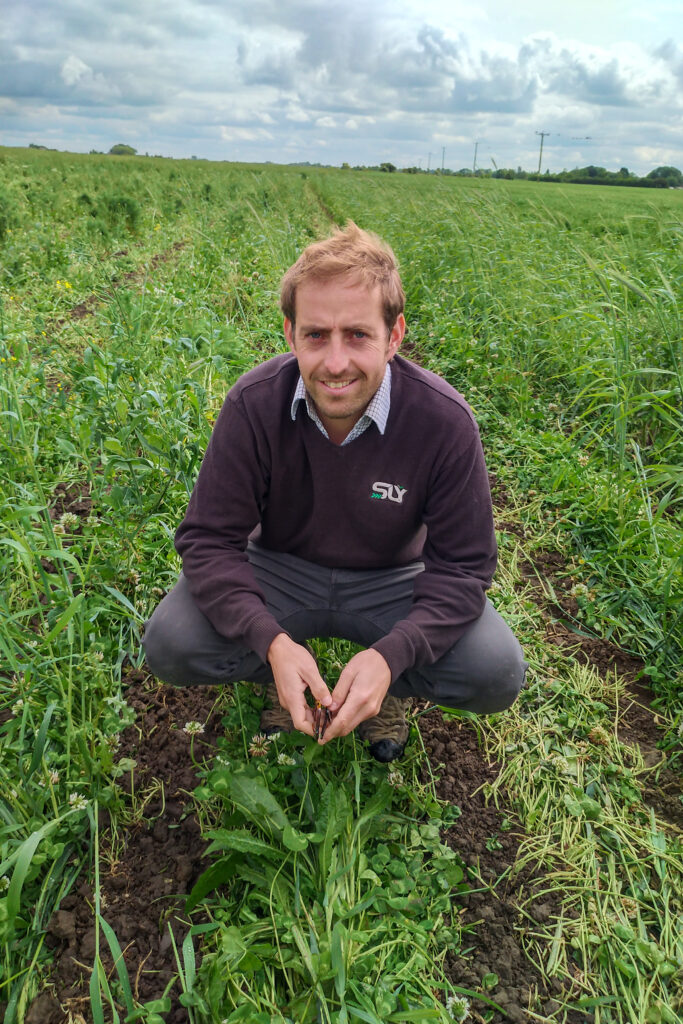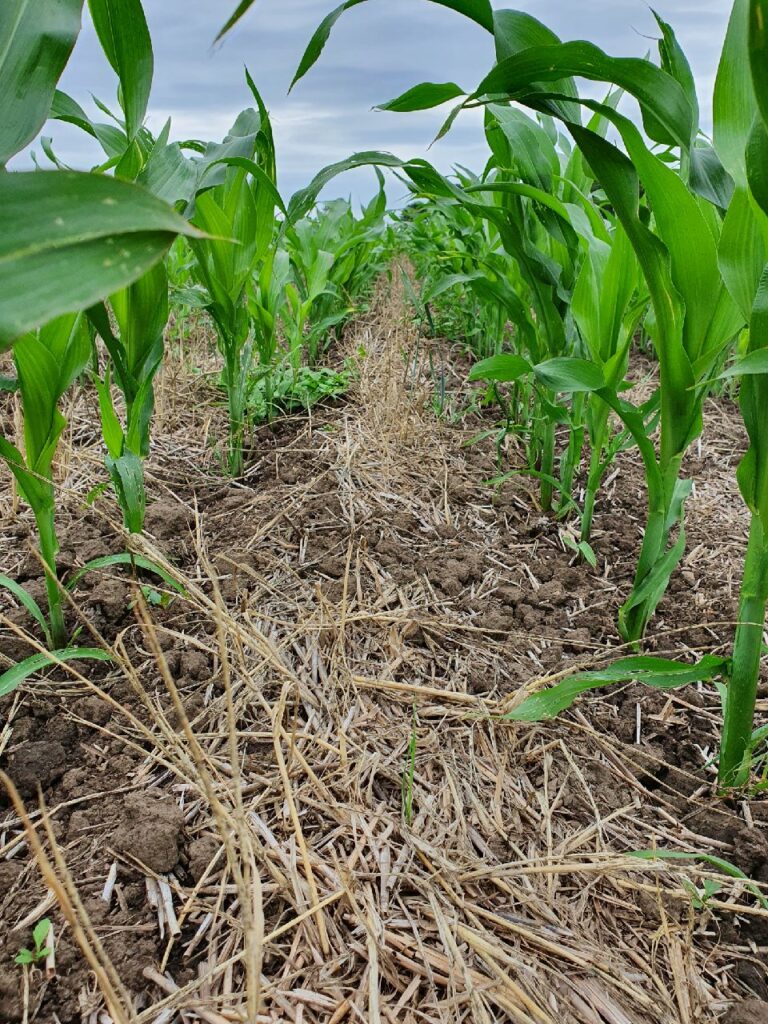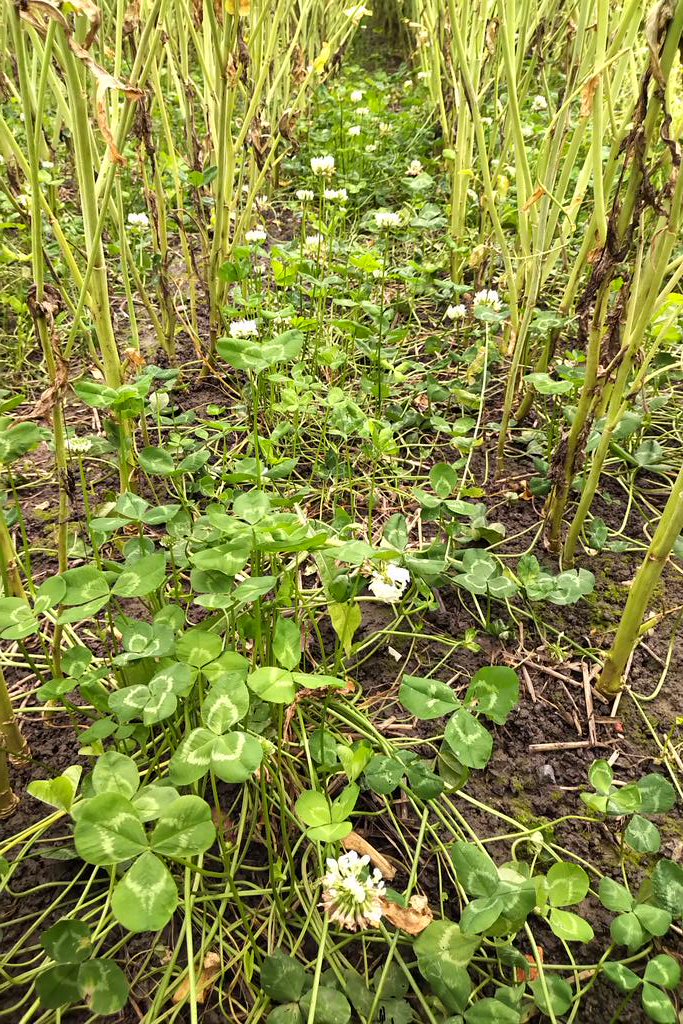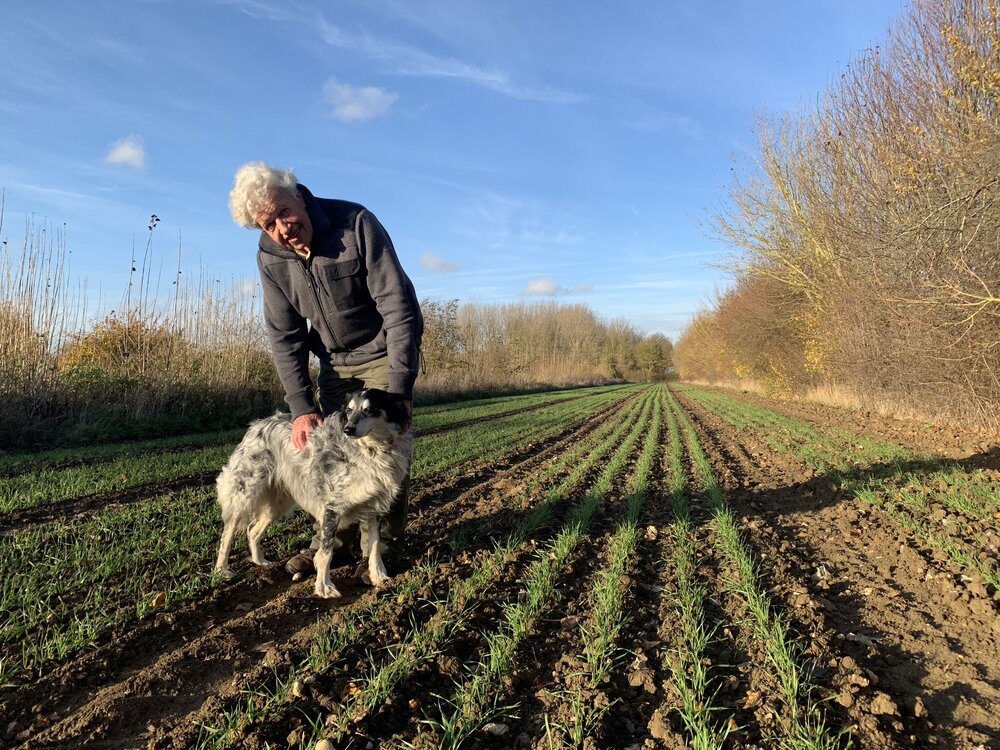A lot learned from a tough year!

Our farm in the South Lincs fens is partially above and partially below sea level. Last winter certainly had its challenges, we had flooding on some fields, flooding in my parent’s house and no winter crops on the farm. It was a long winter to ponder decisions for this spring. But in times of despair its often a good point to reflect on how to make changes and adapt for the season ahead. Drainage is something we will be looking ever closer at, but not in the form of all new plastic pipes. We have fantastic drainage systems in the Fens and I can only feel for the farms in the west with the floods.
Our wheat harvest was pleasing and disappointing in many ways. I have realised how important timing is on spraying, having only farmed 2 years I must admit to being a little blasé on timings. All of our wheat was no-till after forage Maize or Beet and we did have Septoria and Fusarium issues which I believe cost us 1-2T/Ha overall. It had potential to be one of our best yields. As a machine maker and Farmer I should tell everyone its all perfect, but we all know that is not true!
Our Sugar Beet and Maize proved to be a big success in terms of margin. Maize for us is a crop that we are using to try and supercharge soil health. As hard as that is to believe we utilise August until end of April to grow big cover crops, maize being a fast growing C4 plant means we can almost have the best part of the year doing soil improvement work but still make the return we need. Using strip till we keep harvest damage to a minimum and usually don’t require any herbicides, insecticides or fungicides other than Roundup at 3L. If we can drop the Nitrogen its organic electricity!

Running a multitude of businesses has its stresses and strains and I have certainly realised how stressful farming can be. In 2-3 years having the hottest summer ever, longest drought, biggest flood etc etc. But we are very lucky to be working in nature.

Clover Companions with row crops – can it replace synthetic nitrogen? Ongoing work…
We have finished a 2 year cycle with clover in row crops. Starting with Rape, then maize and we will now try some wide spaced winter cereals. We used a broad leaf white clover. We established it in June (after forage triticale) then drilled rape 25cm left or right of it, then harvested the rape. We then grazed with sheep hard. Then established Maize into it after trying various chemical and mechanical suppression techniques. Im really encouraged by it, we have seen some rather unexpected positives and negatives. But we will keep this 2 hectare trial running for 7-10 years in the hope we will find a system that can work long term. (photos of clover in rape and maize)

AGROFORESTRY: decision made!
After a long dreary damp winter, I looked at various options for our farm to plan it from now until 2060 when I hope to hand it on to my son. I am 34 years old, and such a decision takes a lot of thought. After many deliberations and a lot of research I have decided to put the farm into an Agroforestry system, incorporating Perennials (Trees and shrubs) with Annual crops. This will be implemented starting in Winter 2020-2021 with the first 30 hectares, and we aim to complete the planting by 2027. The system design for agroforestry has taken me almost 5 years to plan, initially having being inspired by Stephen Briggs farm nearby and a lot of inspiration from Martin Crawford and the late Martin Wolfe. I was lucky to be able to visit some farms practicing agroforestry in the UK, France and the USA to gain some experience and learn about some pitfalls to avoid.
Many people have said to me, George that sounds very risky. But I look at what we do now as reasonably high risk. Another interesting fact when planning the Agroforestry, big is not necessarily better. It would work better if we had maybe 200 acres less for my system. May this be an opportunity for farm sizes to decrease again? Probably not… but it was interesting to come to the thought of reducing in size.
Our system will involve 24 metre alleys of annual crops or rotated pasture with 4 metre under strips. We will lose around 9-11% of our land in total to the tree strips and grass strips. When I say lose… they are far from a financial loss. When the planting is complete we will be growing I believe 3-4X the human consumable calories/nutrition per hectare compared to our current system, we aim to be energy positive and carbon negative (meaning we will sequester more carbon than we emit and we will generate more energy than we consume). We will produce fruit (for drying and fresh), nuts (whole, cracked, oil, flour), berries (dried), medicinal extracts, cereals, meat, energy and building materials. We will monitor the nutritional output per hectare, calorific output per hectare and hopefully link all of that to some metrics/tracking/indices.
Protein… There is a lot of talk about Veganism, anti-meat etc. One reason we will plant nearly 2000 nut trees is that I want some of my customers to be vegan. I am not vegan, I will never be, but I want to embrace veganism and produce products to welcome them. At the same time we will turn our most successful crop (grass) that we cant digest into meat. We hope to integrate poultry in 2026 and rotate them around the agroforestry lanes.
People have said to me, what would that do to the value of our farm? For one I have decided I wont move (even if the sea comes over the wall in 2050) I am here to stay for my life. When you realise that, the value of the farm is irrelevant, and decisions get a bit easier. It will be my son’s issue. Secondly, a diverse, rich, balanced eco system is a very saleable asset and its value will grow in the future. The fens is a funny old place, flat, drained, to a certain extent man made. But it has its charm!

We plan to market the above ground carbon privately to industry as-well as offsetting our emissions from other businesses we own.
In future articles I hope to write more about the tree species we have chosen, why and how we plan to market them and in what form. Anything I have learned and will learn on our farm is available to others and always will be. We have such exciting fortunate possibilities in UK farming for the next 50 years and we should be excited and smiling even if it’s a bit tough at the minute.